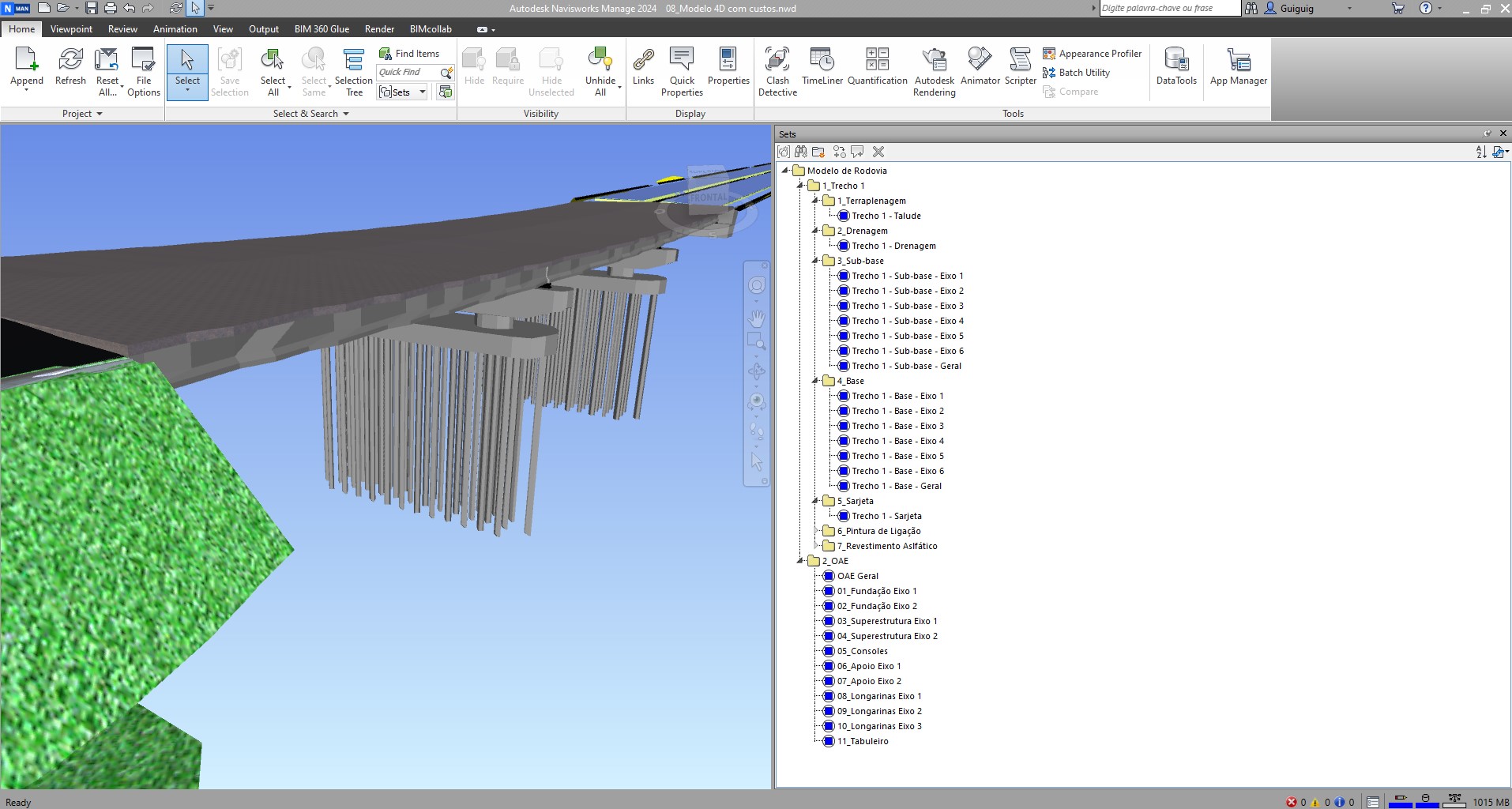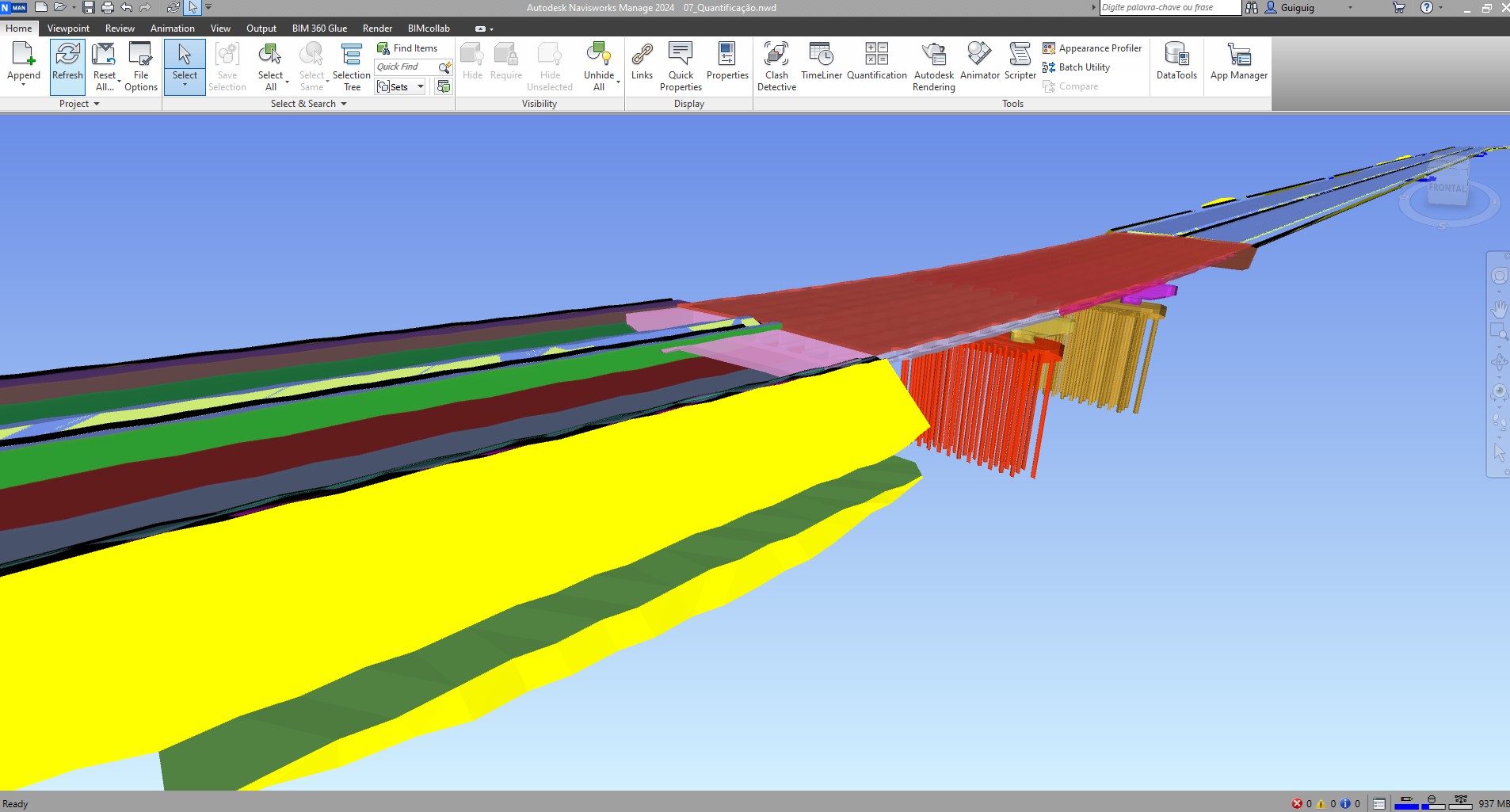This post was written by BIM Corner’s Guest Author, Guilherme Guignone
“Infrastructure” refers to various civil engineering works, but in the context of BIM (Building Information Modeling), it typically excludes buildings. Infrastructure can be divided into several categories:
- Transport infrastructure: This includes roads, bridges, tunnels, airports, and ports.
- Energy infrastructure: This covers hydroelectric, nuclear, wind, thermal, and solar power plants.
- Utility infrastructure: This involves water, gas, sewage, drainage, and communication networks.
- Environmental infrastructure: This includes dams, dikes, and similar structures.
When planning budgets for road infrastructure projects, the project team needs specific knowledge that differs from building construction budgets. Examples of these differences include:
- Unique considerations for site mobilization and demobilization.
- Specific requirements for moving construction materials.
- The critical role of equipment in unit price analyses.
- Complex phases in project execution.
- The need to factor in weather conditions and traffic impacts.
In Brazil, the SICRO system helps estimate prices for transport infrastructure projects funded by the Federal Government. It ensures better financial planning and prevents overpricing in public contracts.
Successful BIM Budgeting requires knowledge of cost engineering specific to infrastructure projects and experience with BIM methodology.
BIM and Budgeting
To manage costs effectively in infrastructure projects, it’s crucial to combine knowledge of cost engineering with experience in using BIM methodologies, especially BIM Budgeting.
Brazilian Federal Decree 10,306 (2020) marked a significant step for BIM usage in Brazil, mandating its application in federal projects. The decree outlines a phased approach:
- Stage 1 (starting January 1, 2021): Includes discipline models, generation of graphic documentation, extraction of quantities, and detection of interferences between disciplines.
- Stage 2 (starting January 1, 2024): Expands to include budgeting, planning and control of work execution, and updating models with as-built information.
BIM budgeting is not just about extracting quantities from models and doing traditional budgeting. The second phase of the decree focuses on integrating cost information into BIM models for better decision-making.
What BIM 5D is?
The BIM Dictionary provides these definitions: 4D BIM is a 3D model with time added to allow construction scheduling. 5D BIM is when cost details are included within the model.
According to Penn State, BIM budgeting is a process where BIM helps generate accurate cost estimates throughout a project’s life. This allows the project team to see how their changes affect costs, helping prevent major budget overruns due to project changes.
Penn State University highlights that one of the key benefits of 5D BIM (Building Information Modelling) is its ability to provide cost information to the project owner during early design phases and throughout the project’s life cycle, including any changes during construction.
When coupled with a construction schedule, like a 4D model, a BIM-developed cost estimate can help monitor budgets throughout the construction period.
Simply put, BIM budgeting stands out from traditional budgeting methods. It involves designing strategies that incorporate cost information during the development of project discipline models, which can then be used for decision-making.
To use BIM budgeting effectively, a model needs to be created for the project. This involves using tools, processes, and people, and it should be outlined in the BIM Execution Plan (BEP). This approach allows costs to be quickly and accurately estimated, providing reliable and high-quality data.
This helps the project team, the contractor, and other project stakeholders have access to cost information integrated into BIM models, which aids in better decision-making.
Making decisions at the beginning of the project can have significant positive impacts on the project’s performance. Any changes made late in the project development, when most of the main decisions have already been made, are usually costly.
Therefore, it’s beneficial to have milestones in the project, which can be turned into partial deliveries for the contractor. The budget team should receive the models at these phases. The models will be produced at the expected level of development for these phases, and budgets should be made based on the model quantities. This approach encourages more strategic work by the planning, budgeting, and project team and allows them to play an active role in the early stages of the project.
There are various methods available for BIM (Building Information Modeling) budgeting.
Some methods allow us to extract quantities from the IFC model and use 4D BIM in one software, while others require different software for both tasks.
Some systems incorporate cost bases directly into the software, while others require manual integration of the software and cost base. Some methods also allow for BIM budgeting to be carried out directly in the modeling software.
There’s no one-size-fits-all method! Before choosing a method, it’s crucial to consider:
- What BIM 4D tools does your organization already use?
- When budgeting for large linear projects like highways, how do 5D BIM tools perform?
- Can your organization afford the licensing costs for 5D BIM solutions?
- How will the process unfold?
- Will professionals provide the IFC and the budget team handle quantification, or will the Technical Responsible handle quantification in integration software like Navisworks?
It’s important to deliberate on these questions and others to choose the most appropriate method.
The Method
Here’s an easy-to-understand explanation of the BIM (Building Information Modeling) budgeting process we use:
- First, we create a model in Autodesk’s Civil 3D and save it in IFC format.
- We import the IFC model into Navisworks.
- In Navisworks, we extract the quantities of materials needed and export this data to an Excel file.
- We then switch to Orçafascio, a cloud-based tool. In Orçafascio, we create the Budget EAP (Project Analytical Structure) and set up unit costs.
- We multiply the unit costs by the quantities we extracted earlier.
- Finally, we calculate the total costs for equipment, labor, materials, and add these totals to the 4D BIM model in Navisworks.
We use this method because it only requires two tools: Navisworks and Orçafascio. Navisworks is great for checking the quality of BIM models and for carrying out 4D and 5D BIM.
It’s also widely used for model verification and 4D BIM, so we can leverage established processes and best practices. Plus, Navisworks works really well with BIM road models, which are large linear models.
The Model - CASE STUDY
The model included a highway divided into four sections and a bridge, considering various construction layers. Personalized selections of components were created for 4D BIM construction.
Initially, it is necessary to build personalized selections of components from the IFC model to then carry out the construction of the 4D BIM.
The next action was the creation of the 4D BIM sequence of the IFC model
The next step was the quantification process. In this process, there are the following steps to be considered:
Quantification Process
Model Information Mapping:
- Check SICRO service composition to map necessary units in the model.
Quantity Extraction:
- Export quantities to an XLS file and include in the Orçafascio budget.
Report Generation:
- Generate various reports after creating the budget in Orçafascio.
Cost Insertion:
- Insert total costs of equipment, labor, materials, and totals into the 4D BIM model.
Progress Check:
- Monitor construction phases such as 25%, 50%, 75%, and 100%.
Conclusion
In conclusion, this article emphasizes the importance of developing a strategy for the implementation of Building Information Modeling (BIM), including 4D and 5D models. This strategy should consider BIM tools, processes, and people involved.
The goal is to ensure that cost information is available during all stages of the project’s development, leading to more informed decision-making that aligns with the project’s objectives.
It’s crucial for everyone involved in project planning, contract inspection, and execution to understand and follow best practices for BIM implementation.
This article aims to aid in meeting the current demands and guiding discussions on the topic.
A video explaining the described method, taken from one of the postgraduate classes I’ve taught, is also provided below.
























